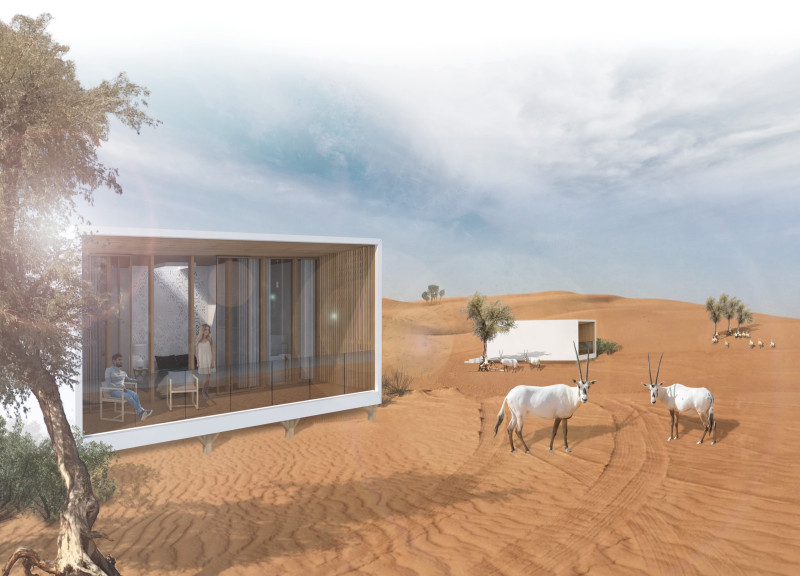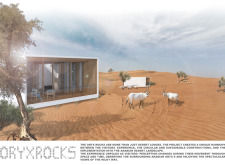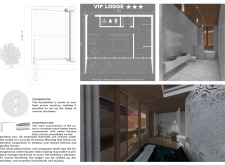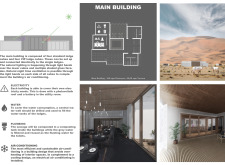5 key facts about this project
The Oryx Rocks project is located in the expansive Arabian desert, designed to provide a unique lodging experience while fostering a connection to the surrounding landscape. The design focuses on creating a balance between visitor engagement and sustainable practices. Each lodge is crafted as a simple cube, intentionally structured to blend into the desert environment and minimize visual impact.
Architectural Layout
The layout consists of modular cube-shaped structures that feature outdoor terraces, achieved by subtracting sections from the south-facing sides of the cubes. This thoughtful design enhances the visitor experience by providing shaded areas while reducing direct sunlight exposure inside the lodges. Slits in the terrace roofs allow hot air to escape, while the openings in the floors permit cooler air to flow in, preventing sand from accumulating at the entrances.
The elevated design of the lodges helps maintain airflow underneath, which is essential in the hot desert climate. This configuration serves practical purposes while ensuring the buildings remain visually aligned with their natural setting.
Materiality
Material choices emphasize sustainability and practicality. The foundations use screw anchors to provide flexibility in widespread placements across the desert. Timber frame components are prefabricated, allowing for quick assembly on-site. These structures are paired with metal finishes, which add durability and a contemporary appearance.
The roofs are equipped with photovoltaic panels that generate renewable energy. This aspect not only meets the energy needs of the lodges but also supports the overarching theme of sustainable living.
Ventilation and Water Management
The design promotes natural ventilation effectively. Light bands are integrated into the facades of the lodges to allow daylight to enter without relying heavily on artificial lighting. Openings positioned strategically throughout enhance air circulation at night, creating comfortable spaces for the occupants.
Water management is another critical element of the project. A central well is established to supply sufficient water for the lodges, while the sewage system employs composting tanks, addressing waste in an environmentally friendly manner. The system also recycles grey water for use in toilet flushing, emphasizing resource conservation.
Attention to Detail
Each lodge features thoughtfully designed interiors aimed at maximizing comfort. Shaded glass facades allow guests to enjoy expansive views of the desert and the night sky, enhancing the overall experience. Visitors can observe local wildlife, such as the Arabian oryx, from their lodgings. This integration of nature into the living spaces highlights the project’s commitment to connecting people with their environment in a meaningful way.























































